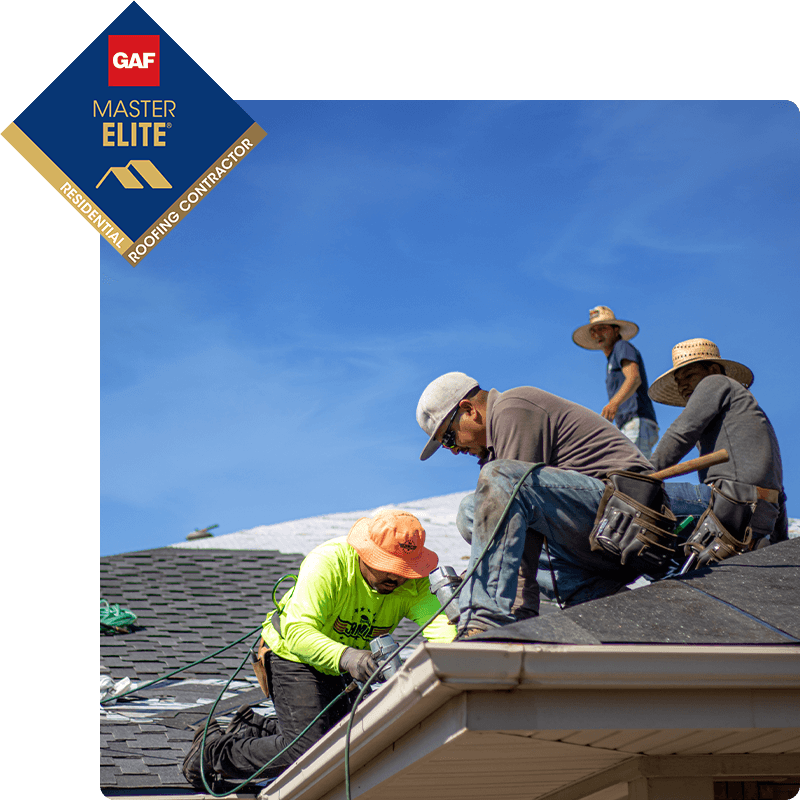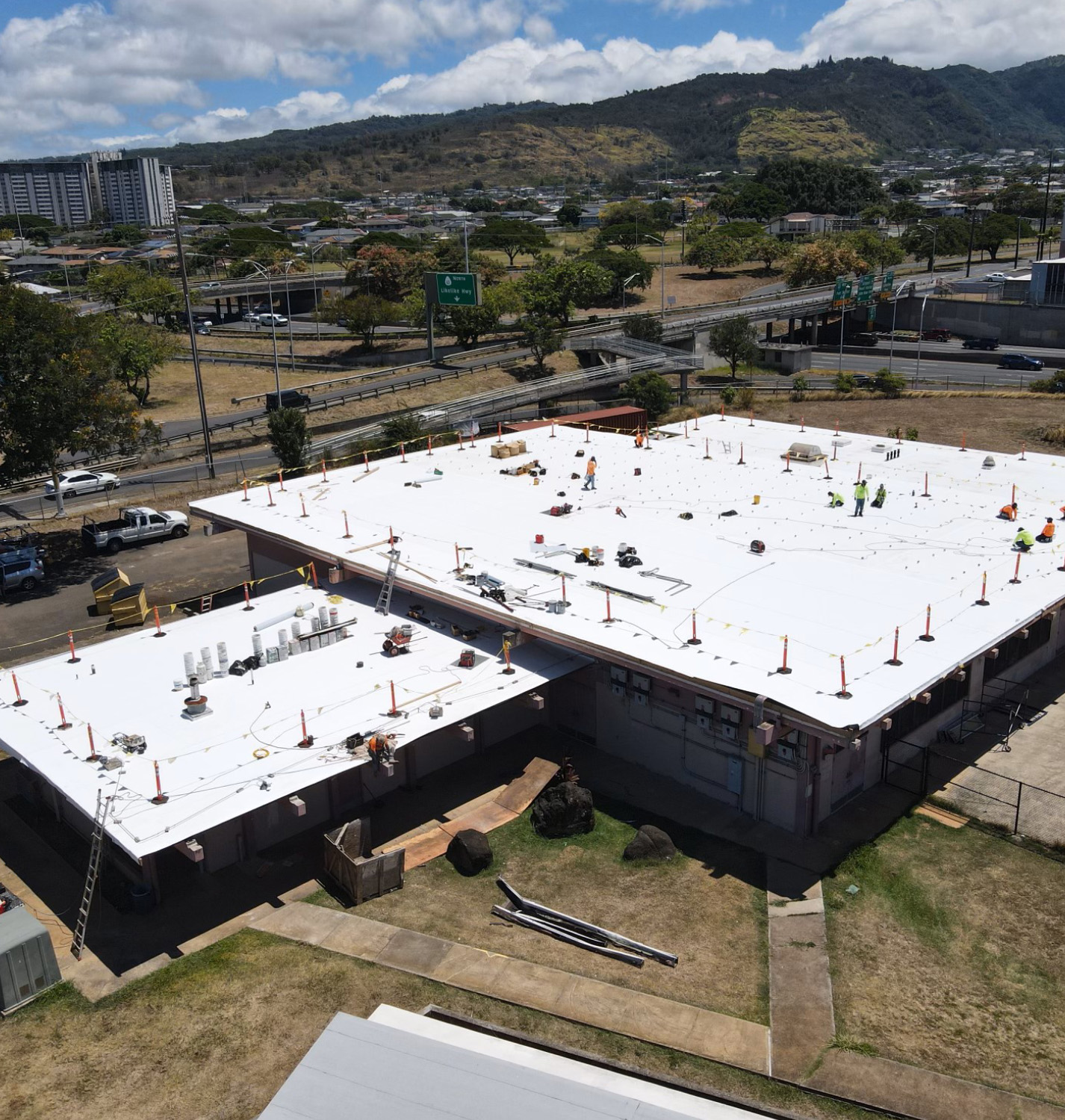Benefits of Hiring a Licensed roofing company honolulu
Wiki Article
The Ultimate Checklist for Roofing System Install: Guaranteeing High Quality and Toughness
The procedure of installing a roof requires mindful focus to information. A comprehensive checklist can help ensure quality and toughness throughout the job. From assessing the existing roof problem to selecting the appropriate materials, each action is essential. Correct preparation and devices play a crucial role in accomplishing an effective installment. Lots of forget the relevance of final inspections and ongoing maintenance. Recognizing these aspects can substantially affect the durability of a brand-new roof.Analyzing Your Present Roof Problem
How can one efficiently determine the condition of their existing roofing system? A comprehensive assessment is important for reviewing a roofing system's stability. Property owners need to begin by checking out the roofing system from the ground, seeking visible indications of wear such as missing tiles, sagging locations, or staining. Closer evaluation can be done by accessing the roof covering itself, where one ought to check for fractured or curled shingles and examine flashing around vents and chimneys.Additionally, the inside of the home warrants attention; water spots or mold and mildew growth on ceilings and wall surfaces may suggest leakages. Attic inspections can expose possible issues, such as inadequate air flow or indicators of moisture.Regular evaluations, ideally twice a year, can aid recognize troubles early and avoid costly repairs. By recognizing the roofing's present state, property owners can make educated decisions about essential upkeep or substitutes.Selecting the Right Roofing Products
When selecting roof covering products, what aspects should house owners think about to guarantee a durable and reliable option? The climate plays a substantial role; materials must stand up to local weather condition problems, whether it's hefty rainfall, snow, or extreme sunlight. Next, the longevity of the product is essential; options like steel or slate deal expanded lifespans compared to asphalt shingles. Home owners need to additionally review the material's weight, as this can impact the structural stability of the home. Additionally, appearances matter; the chosen product needs to enhance the total architectural design. Energy effectiveness is one more consideration; some products mirror heat, decreasing air conditioning expenses. Finally, budget restraints will determine selections; while some materials might have a lower ahead of time expense, long-term durability can lead to higher cost savings. By weighing these aspects, homeowners can make educated choices that boost their roofing system's quality and long life.Preparing for Setup
Prior to the setup procedure starts, homeowners must guarantee that their residential or commercial property is appropriately prepared to accommodate the new roofing. This prep work entails numerous vital actions to ensure a smooth and effective setup. Initially, house owners need to remove the area around your home of any kind of particles, tools, or furniture that could hinder accessibility for professionals. In addition, it is essential to notify next-door neighbors regarding the forthcoming job to lessen interruption and secure cooperation.Next, house owners should inspect their existing roof covering and architectural parts, addressing any possible issues such as decaying wood or leaks that can influence the setup. Moreover, securing needed authorizations and sticking to neighborhood building codes is important for compliance and safety. Setting up the installation throughout positive weather conditions aids avoid hold-ups and warranties that the work earnings without problems. Appropriate prep work sets the structure for an effective roofing job, inevitably enhancing the longevity and performance of the new roof covering.
Crucial Devices and Tools
In roof installation, having the right tools and equipment is important for a successful job. This consists of important safety gear, numerous roof covering setup devices, and reliable product managing devices. Correct prep work and option of these products can considerably improve efficiency and safety and security on duty site.Security Equipment Necessities
Safety equipment is a vital part of any type of roof installment task, making certain the wellness of workers at elevated elevations. Vital security equipment consists of construction hats, which secure against falling particles, and safety and security goggles to secure the eyes from dirt and particles. Non-slip shoes is substantial for preserving grip on high surfaces, while harnesses and lanyards provide fall defense, avoiding serious injuries. Handwear covers assist safeguard hands from sharp products and minimize fatigue throughout extended durations of work. In addition, high-visibility vests boost visibility, advertising understanding among employee and neighboring workers. Using ear protection may additionally be a good idea in noisy atmospheres. In general, sticking to safety equipment needs is essential for a risk-free and effective roof setup process.
Roof Covering Installation Devices
Proper safety and security procedures lay the groundwork for an effective roofing project, yet having the right tools and equipment is just as essential. Essential devices for roofing setup consist of a ladder, permitting risk-free accessibility to the roof covering, and a roof covering nail gun to ensure efficient and secure fastening of products. A chalk line is vital for noting straight lines, while an energy blade is required for cutting roofing products accurately. Additionally, a pry bar aids in eliminating old shingles. Employees need to likewise have a level to validate appropriate positioning and water drainage. Lastly, a good set of job gloves protects hands while giving grasp. Together, these tools facilitate a smooth roof covering process, boosting both high quality and longevity.Material Handling Tools

A range of material handling equipment is crucial for an efficient roof installment process. Devices such as forklifts, lifts, and dollies help with the movement of heavy materials like tiles and underlayment to the job website and onto the roofing system. Using scaffolding and ladders guarantees secure access to raised locations while reducing the threat of injury. Tarps and containers are necessary for appropriate storage and organization of products, avoiding damages and guaranteeing very easy retrieval. Furthermore, a crane might be needed for bigger roofing jobs to raise significant materials directly onto the roof. Proper training in utilizing this tools is vital; it boosts operations efficiency and adds to overall project security, ensuring an effective roof covering installment.
Step-by-Step Installation Process
The step-by-step setup procedure is necessary for an effective roof covering installation. It begins with preparing the roof surface, adhered to by the proper installment of underlayment, and concludes with the reliable securing of roof materials. Each of these steps plays a vital duty in making sure the durability and performance of the roof.Prepare the Roof Covering Surface Area
Preparing the roofing surface area is necessary for ensuring an effective installment of roofing materials. This procedure begins with a detailed assessment to recognize any existing damage or debris. Any kind of loosened shingles, extending nails, or old roofing products need to be eliminated to produce a tidy, smooth foundation. Next off, the roofing system deck must be checked for rot or structural concerns, as these can endanger the integrity of the brand-new roofing system. After repairs, a thorough cleansing is needed; this includes sweeping away dirt, leaves, and any kind of other contaminants that could prevent bond. Finally, making sure proper water drainage and ventilation is important, as these elements affect the durability of the roof. A well-prepared surface establishes the stage for perfect installment and sturdiness.Set Up Underlayment Correctly
Setting up underlayment properly is basic for enhancing the general efficiency of the roof. The process begins with choosing the appropriate underlayment material, which can include felt, synthetic, or rubberized choices. Next, verify the roofing surface is clean and completely dry prior to laying the underlayment - commercial roofing honolulu. Begin at the cheapest point of the roof covering, presenting the underlayment horizontally and overlapping each row by at the very least six inches. It is very important to secure the underlayment in position with staples or roof nails, staying clear of voids or creases that could compromise water resistance. Trim excess product at the sides, assuring a cool coating. This meticulous get more info installation step is vital for supplying an included layer of defense versus moisture and improving toughnessProtect Roof Materials Efficiently
After confirming the underlayment is properly installed, the next action entails safeguarding the roof materials efficiently. The roof specialist must gather all required materials, including tiles, nails, and blinking. Starting at the most affordable factor of the roofing, shingles should be stocked a staggered pattern, validating correct overlap to stop leakages. Each roof shingles has to be fastened with nails, utilizing the producer's advised spacing and quantity. It is necessary to drive nails straight, staying clear of over-penetration, which can jeopardize the material. Blinking need to be installed around smokeshafts and vents to improve waterproofing. The contractor needs to perform a complete inspection to confirm all materials are safely secured, as this will considerably impact the roof covering's overall toughness and longevity.Carrying Out Final Inspections
Comprehensive final inspections are necessary to guarantee that a newly set up roof covering meets all safety and high quality requirements. This important action includes assessing the entire roofing system for any prospective problems that may emerge post-installation. Inspectors should analyze the positioning of tiles, ensuring they are effectively safeguarded and devoid of problems. Flashing and ventilation systems should likewise be evaluated for right setup and functionality.Additionally, the assessor must inspect rain gutters and downspouts to verify they are properly positioned to help with water drainage. Any indicators of leaks, misaligned products, or inadequate securing around infiltrations must be addressed instantly. Roofing professionals must likewise ensure that all debris from the installation procedure is eliminated, leaving the website clean and safe. Performing these detailed examinations assists avoid future problems, ultimately extending the life-span of the roofing and offering homeowners with tranquility of mind regarding their financial investment.Keeping Your New Roofing System
Proper upkeep is vital for ensuring the long life and performance of a brand-new roof covering. House owners should perform regular inspections at the very least two times a year, preferably in springtime and fall, to determine possible issues early. Throughout these examinations, they need to seek signs of damage, such as missing tiles, leakages, or debris buildup, which can hinder drain and advertise mold growth.Cleaning rain gutters and downspouts is essential, as blocked systems can cause water damages and structural issues. In addition, cutting overhanging branches can avoid abrasion and debris buildup on the roof surface.It's likewise suggested to set up professional evaluations every few years to examine the roofing system's problem thoroughly. Maintaining records of maintenance tasks and repair services can help track the roofing's efficiency with time (honolulu roofing contractor). By adhering to a consistent upkeep regimen, home owners can shield their investment and assure their new roofing continues to be reliable for several years to comeFrequently Asked Questions
The length of time Does a Regular Roof Covering Installment Take?
The duration of a typical roof installment varies based on variables such as roof covering dimension, materials, and climate condition. Typically, it can take anywhere from one day to numerous weeks to complete the installment.Can I Set Up a New Roofing Over an Existing One?
The inquiry of mounting a new roofing over an existing one typically occurs. Several house owners consider this option for cost-effectiveness, yet it is important to evaluate local building ordinance and the architectural integrity of the existing roof covering.What Permits Are Needed for Roofing System Installation?
Prior to installing a roof, one must inspect neighborhood policies. Generally, structure authorizations are needed, in addition to evaluations to assure compliance with safety requirements and zoning regulations. Consulting with local authorities is crucial for proper support.What Guarantees Are Offered for Roof Covering Products?
Various guarantees exist for roof covering materials, normally consisting of producer guarantees covering defects and performance. Furthermore, some contractors provide handiwork warranties, making sure installment quality. Purchasers should thoroughly examine terms to understand coverage period and constraints.Just How Can Weather Affect the Installation Process?
Weather considerably impacts the installation process, as rainfall, snow, or severe temperature levels can postpone job, affect material adhesion, and compromise safety. Proper planning and organizing around climate forecasts are essential for successful roofing installment.Report this wiki page